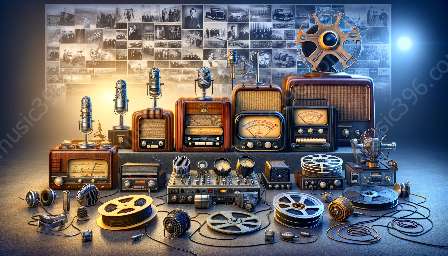Radio audience measurement is a critical aspect of the radio industry, influencing advertising revenue, programming decisions, and audience engagement. In this comprehensive guide, we'll explore the key role partnerships and collaborations play in improving radio audience measurement and driving industry innovation.
The Importance of Audience Measurement in Radio
Before diving into the impact of partnerships and collaborations, it's essential to understand the significance of audience measurement in the radio industry. Audience measurement provides crucial data on listenership, demographics, and preferences, enabling radio stations to tailor content and advertising strategies to their audience's interests effectively.
Accurate audience measurement also influences advertising rates, allowing radio stations to attract advertisers based on verified listenership numbers. As a result, audience measurement directly impacts the financial performance of radio stations and the broader industry.
Challenges in Radio Audience Measurement
Despite the importance of audience measurement, the radio industry faces several challenges when it comes to accurately capturing listenership and engagement. Traditional measurement methods, such as diary-based surveys and sample-based ratings, have limitations in capturing real-time and comprehensive audience data. Additionally, the rise of digital and streaming platforms has made it more challenging to track listeners across various mediums and devices.
Furthermore, the COVID-19 pandemic has shifted audience behaviors, leading to new patterns of radio consumption and making it vital for measurement systems to adapt to these changes. These challenges highlight the need for innovative approaches and collaborative efforts to enhance radio audience measurement.
The Role of Partnerships and Collaborations
Partnerships and collaborations play a pivotal role in improving radio audience measurement by fostering innovation, leveraging expertise, and integrating diverse datasets. When radio industry stakeholders, including broadcasters, measurement firms, and technology providers, come together, they can combine resources and knowledge to develop more robust measurement solutions.
For instance, partnerships between radio stations and technology companies can lead to the integration of advanced audience tracking tools, allowing for more accurate and granular data collection. Collaborations with advertising agencies and market research firms enable radio stations to gain insights into audience behavior beyond traditional listenership metrics, such as purchasing intent and brand affinity.
Examples of Successful Partnerships
Several notable partnerships have demonstrated the tangible impact of collaboration on radio audience measurement. For instance, a major radio broadcasting group partnered with a data analytics company to implement a sophisticated audience measurement system that combines radio listening data with social media engagement and consumer behavior data.
In another example, a radio industry association collaborated with academic researchers to develop a new survey methodology that captures listenership across both traditional and digital radio platforms. These partnerships have led to more comprehensive and accurate audience measurement, benefiting both radio stations and advertisers.
Benefits of Improved Audience Measurement
Enhancing radio audience measurement through partnerships and collaborations offers numerous benefits to the industry, including:
- Enhanced Advertising Effectiveness: More precise audience data enables advertisers to craft targeted and impactful campaigns, ultimately benefiting both advertisers and radio stations.
- Improved Content Personalization: Detailed audience insights empower radio stations to create tailored content that resonates with their listeners, fostering higher engagement and loyalty.
- Increased Industry Competitiveness: Robust audience measurement capabilities position radio stations as attractive advertising platforms, strengthening their competitive stance in the media landscape.
- Informed Business Decisions: Accurate audience measurement serves as a foundation for strategic business decisions, such as programming adjustments and audience expansion efforts.
The Future of Radio Audience Measurement
Looking ahead, the future of radio audience measurement is likely to be shaped by continued collaborations and partnerships that harness emerging technologies and data sources. Innovations such as artificial intelligence, machine learning, and cross-channel tracking are expected to refine audience measurement processes, offering a more holistic view of radio listenership.
Furthermore, as the radio industry evolves, partnerships with digital streaming platforms and smart device manufacturers will become increasingly important in capturing the complete spectrum of radio consumption. These partnerships will enable integrated measurement systems that encompass traditional radio broadcasts, online streaming, and connected devices, providing actionable insights for radio stakeholders.
Conclusion
Partnerships and collaborations are catalysts for progress in the realm of radio audience measurement. By uniting industry players, sharing expertise, and embracing innovative technologies, partnerships drive the development of next-generation audience measurement solutions that accurately capture the diverse behaviors and preferences of radio audiences. As the industry continues to evolve, collaborative efforts will remain integral to ensuring that radio audience measurement keeps pace with changing consumption habits, ultimately benefiting radio stations, advertisers, and most importantly, the listeners.









































